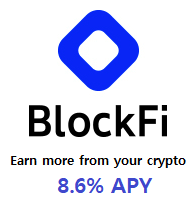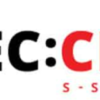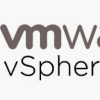These BGP communities are recognized and used by AS6667
NOTE: These BGP communities will evolve with changes in transit providers and exchange points. If you are having problems with the BGP communities, check here first to see if a BGP community has been changed or removed. We will try to not change the meaning of a BGP community unless the new meaning is a direct replacement.
The BGP communities that set the local preference within our network are usable by all customers and peers. The default local preference for customers is 101 and for peers it is 100. The default local preference for transits is 90. Local preference of 80 is meant for backup provided by a customer or peer to someone else and the local preference of 110 is meant for overriding routing to choose a certain path over others. Peers can’t set a preference of 110.
Local Preference
| BGP Community String | font size="2">Description |
| 6667:80 | Set LOCAL_PREF to 80 |
| 6667:90 | Set LOCAL_PREF to 90 |
| 6667:100 | Set LOCAL_PREF to 100 |
| 6667:110 | Set LOCAL_PREF to 110 |
The BGP communities that control route announcement to peers and transits are only available to customers. The x specifies what the action for the said target is:
1 Announce with 6667 prepended to as-path …
2 Announce with 6667 6667 prepended to as-path …
3 Announce with 6667 6667 6667 prepended to as-path …
9 Don’t announce … (default and takes precedence if present)
We will also let external BGP communities through from customers. This will enable customers to use similar BGP communities of our peers and transits. Some pages describing these BGP communities have been collected at the end of the page.
| BGP Community String |
Description |
| 6667:90x | to all AS6667 customers |
| 6667:100x | to all transits |
| 6667:101x | to AS3356 Level3 |
| 6667:102x | to AS3549 Global Crossing |
| 6667:103x | to AS3320 T-Systems |
| 6667:200x | to all peers |
| 6667:201x | to peers in Helsinki Finland and at Ficix |
| 6667:202x | to peers in Stockholm Sweden and at Netnod |
| 6667:203x | to peers in London United Kingdom and as LINX |
| 6667:204x | to peers in Frankfurt Germany and at DECIX |
| 6667:205x | to peers in Hamburg Germany |
| 6667:206x | to peers in Copenhagen Denmark and at DIX |
| 6667:207x | to peers in Oslo Norway and at NIX |
| 6667:208x | to peers in Amsterdam The Netherlands and at AMS-IX |
| 6667:209x | to peers in New York USA and at NYIIX |
These BGP communities are tagged on all routes to distinguish their origins. They are sent to everyone but not excepted from outside. They are there to let customers filter routes based on route source.
A normal customer announces all their routes to us with BGP communities 6667:900, 6667:1000 and 6667:2000. When Eunet receives the routes, they are tagged with 6667:300x and the local location BGP community string(6667:4xxx.)
Route Origins
|
BGP Community String |
Description |
| 6667:3000 | Internal or customer |
| 6667:3001 | public peering |
| 6667:3003 | private peering |
| 6667:3004 | Transit |
| 6667:4000 | Tampere Finland |
| 6667:4001 | Turku, Finland |
| 6667:4002 | Helsinki, Finland |
| 6667:4003 | Stockholm,Sweden |
| 6667:4004 | London United Kingdom |
| 6667:4005 | Frankfurt, Germany |
| 6667:4006 | Hamburg, Germany |
| 6667:4007 | Copenhagen, Denmark |
| 6667:4008 | Oslo, Norway |
| 6667:4009 | Amsterdam The Netherlands |
| 6667:4010 | New York, USA |
Applying BGP Community string with sample configuration
1. Get the latest BGP community string from your ISP/upstream provider or check www.ShowipBGP.com web site.
2. Pick the best BGP community string for your traffic shaping plan (mainly incoming traffic). Most of ISPs are providing BGP community string with local preference and AS prepending
option. Cannot tell which one is better than the other. It will depend on your global traffic shaping plan.
3. Follow the below commands ( Cisco only )
The below Sample configuration will tag the 10.0.0.0/24 route with [ISP AS]:120 or [ISP AS]:3 and will not tag any other routes.
router#config t
router(config)#ip bgp-community new-format
router(config)#access-list 10 permit 10.0.0.0 0.0.0.255
router(config)#access-list 10 deny any
router(config)#route-map [to-ISP] permit 10
router(config-route-map)#match ip address 10
router(config-route-map)#set community [ISP AS]:120 <—- using Local Preference
or
router(config-route-map)#set community [ISP AS]:3 <——- using AS prepending
router(config-route-map)#route-map [to-ISP] permit 20
router(config-route-map)#exit
router(config)#router bgp [xxxx] <——————————- xxxx = customer’s ASN
router(config-router)#neighbor x.x.x.x send-community
router(config-router)#neighbor x.x.x.x route-map [to-ISP] out
router(config-router)#exit
router(config)#exit
router#copy running-config startup-config
4. And then, go to www.RouteServer.org and pick one of route server on the map to see your announcement. If you are using AS prepending option, you will see your AS prepends on route servers. Sometime you might not see your route with particular ISP path.
In most of case it might not be any routing problem, just the route path was dropped at somewhere by BGP best path selection scheme. Try Oregon route server, if you can see your route. The Oregon route server is providing many possible and available paths between BGP speakers and neighbors.
If you don’t see your route on there? check other route servers and also check your
BGP configuration. You might need to contact your upstream provider to check what they are learning BGP route from you.



 The www.ipBalance.com runs by a volunteer group with IT professionals and experts at least over 25 years of experience developing and troubleshooting IT in general. ipBalance.com is a free online resource that offers IT tutorials, tools, product reviews, and other resources to help you and your need.
The www.ipBalance.com runs by a volunteer group with IT professionals and experts at least over 25 years of experience developing and troubleshooting IT in general. ipBalance.com is a free online resource that offers IT tutorials, tools, product reviews, and other resources to help you and your need.

![[Splunk] – Basic search fields and commands logo_splunk.png](https://ipbalance.com/wp-content/uploads/2009/06/logo_splunk-100x80.png)

